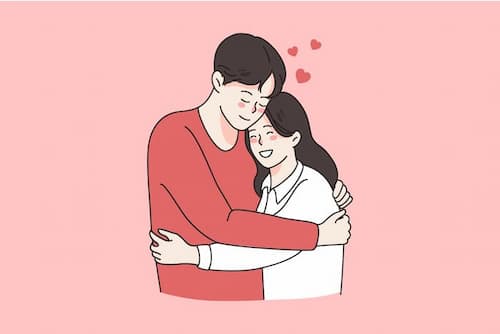As a species, humans are “hardwired” to seek out and form relationships. It is our most basic instinct, a profound need, an existential imperative that defines us and sets up the foundation upon which we build our lives.
In fact, from the very moment we’re born, before learning to walk or talk, we start to form bonds with our parents or caregivers. This bond later evolves into a lens we use to perceive ourselves and the world that surrounds us.
In other words, although we still don’t have a sense of self, we do possess an innate, instinctive drive for forming attachments. However, since these bonds are (mostly) a result of outside influences, it stands to reason that not every single one will be the same… Or healthy.
The disorganized anxious attachment style is one of behavioral patterns that can often hinder a person’s ability to form and/or maintain a stable, lasting relationship. Confusing, detrimental, and complex as it may be, a disorganized attachment style is just another instance of learned behavior, meaning that it can be overcome with self-awareness, practice, and professional guidance. However, you first need to understand it.
What Is An Example Of Disorganized Attachment?
Symptoms of disorganized attachment in adults, as well as children, can manifest in different ways, and they can often be difficult to interpret. Unless you know exactly what to look for. So, to help you understand, we’ll start off with several real-world scenarios:
- Scenario 1: A child returns from school. However, instead of rushing into their parent’s embrace, they approach timidly, averting gaze;
- Scenario 2: A teenager reads a poem to their romantic partner. However, once finished, they refuse a delighted, amorous hug, and instead shut down completely;
- Scenario 3: A man meets a new friend and they hit it off in the beginning of the relationship. After a while, their new friend starts taking a genuine interest in their life, this man starts distancing himself, without explanation;
- Scenario 4: A woman in a job interview is showcasing her skillset, impressing everyone with her confidence and competence. However, when an interviewer comes to congratulate her and offer her a position, she is dismissive of her achievements ad can’t celebrate the accomplishment;
- Scenario 5: A person announces a big, romantic surprise to their significant other. Thrilled at first, their significant other suddenly switches to questioning their partner’s intentions, motives, and sincerity.
By now, you’re probably grasping the most common themes permeating all of the above examples: inner conflict, contradictory behavior, and reluctance. TRUST. These are all signs of disorganized attachment. As with everything connected to this type of attachment, they’re not simple, but complicated, convoluted, and complex.
What Is A Characteristic Of Disorganized Attachment?
If we were to sum up disorganized behavioral patterns in a single word, that word would have to be: ambivalence. Indeed, as per the very definition of the term in Merriam-Webster, disorganized individuals show “simultaneous and contradictory attitudes or feelings” toward emotional closeness.
At first glance, the disorganized frame of mind might seem illogical, irrational even. However, this is not the case. Individuals expressing disorganized tendencies continually oscillate between an honest desire for establishing a meaningful connection and an innate apprehension of that connection taking root.
This perpetual state of being on an “emotional see-saw” indicates a clear link toward learned attachment experiences. So, rather than being deemed “irrational” or “illogical”, the disorganized behavior has a perfectly valid, logical, and rational base, typically founded during the earliest childhood.

What Causes A Disorganized Attachment Style?
Nowadays, the vast majority of psychologists and behavioralists believe that the formation of a disorganized attachment style can be attributed to extreme childhood trauma. Specifically, traumatic experiences involving an attachment figure.
“Attachment figure” (parent or caretaker) is someone the child depends upon to provide for their physical and emotional needs. However, when that figure turns from a source of comfort to a source of fear, typically by means of physical, verbal, or sexual abuse, the child will instinctively develop defense mechanisms to protect themselves.
The child understands they must be wary of the attachment figure, but it also knows that it depends on them for survival. In other words, although the child craves love and affection, they must also protect themselves from pain and harm.
And it does so in the only way they know how: by remaining ever vigilant, expecting the worst, and taking every show of affection with a hefty dose of reserve. This kind of behavior is the very definition of disorganized attachment in its condensed form.
Is Anxious-Avoidant The Same As A Disorganized Attachment Style?
Yes, “anxious-avoidant” is a commonly used synonym for disorganized individuals. However, this term is also a common source of confusion, due to the existence of anxious and avoidant attachment styles as separate entities.
- Anxiously attached individuals are so eager and intent on being in a relationship, that they’ll do anything to form or stay in one, even at the expense of their own well-being;
- Avoidantly attached individuals, on the other hand, are so terrified of intimacy, that they’ll actively seek out ways to push others away and avoid relationships.
Now it is clear why a disorganized attachment style is also called anxious-avoidant: individuals fostering it exhibit both behaviors. Typically, they vacillate between the two extremes, with achieving a semblance of balance or, at least, middle ground being a virtual impossibility.
What Does Disorganized Attachment Look Like In Relationships?
A disorganized attachment style in relationships can be best described as a constant ebb-and-flow, a perpetual oscillation between seeking proximity and creating distance. The reason behind this lies in their deep, honest desire for emotional closeness which is counterbalanced by an overwhelming, deep-seated fear of being hurt.
This emotional contradiction leads to the disorganized embracing push-and-pull dynamic as their default modus operandi: an intimate moment broken by a sudden withdrawal; a show of affection met with skepticism; an expression of love met with apprehension.
How To Help Someone With Disorganized Attachment?
Does everything said up until now mean that a disorganized person is incapable of love? Unworthy of it? Unable to form and maintain a meaningful relationship? Are they a lost cause? The answer to all of these questions is a resounding, absolute, unequivocal NO!
Disorganized individuals possess such a vast capacity to love and to be loved. Only, their journey toward it is paved with thorns of past experiences, venomous and haunting and they’re threading it barefoot. Yet here’s the amazing thing: Despite the difficulties, the challenges, the pain, the journey is more than worth the trouble!
With compassionate support from their loved ones and a bit of professional help, it’s possible to understand your disorganized attachment and where it’s coming from and develop a more secure attachment style that will translate into a healthier relationship.

Learn How To Overcome Disorganized Attachment Style In Relationships With PIVOTs Help
Whether you recognize symptoms of disorganized attachment in adults close to you, your children, or yourself, know that help isn’t far. While altering this behavior may seem like an insurmountable mountain, it can be overcome with compassionate, professional guidance. PIVOT is here to be the beacon of light on that transformative journey. Here, in the tranquil environment of our Glass House retreat, a team of highly trained relationship coaches offers personalized guidance as part of the treatment for disorganized attachment, helping individuals address the root cause of the problem and setting them on the road to better, more fulfilling relationships. Reach out today!